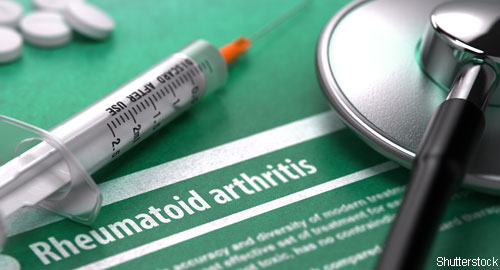 As a defensive end for the New York Giants, Jason Pierre-Paul is doing everything he can to decrease the likelihood of getting arthritis due to sports-related movements. He’s seen firsthand how debilitating arthritis can be, because his best friend’s father suffers from the condition.
As a defensive end for the New York Giants, Jason Pierre-Paul is doing everything he can to decrease the likelihood of getting arthritis due to sports-related movements. He’s seen firsthand how debilitating arthritis can be, because his best friend’s father suffers from the condition.
“He has difficulty walking and ankle pain, and has had some blood clots as a result of having rheumatoid arthritis [RA],” the football player says.
Mr. Pierre-Paul spoke to participants at the Arthritis Foundation’s annual Walk to Cure Arthritis event at Foley Square Park in New York, sponsored by the Hospital for Special Surgery (HSS), on May 14. He shared why, as an elite athlete, he believes it’s important to understand arthritis and how it affects a player’s joints and mobility.
“Many people do not realize that joint health is essential to my performance and ability to play professional football,” says Mr. Pierre-Paul, who does not have arthritis. “To ensure that my joints are healthy, I incorporate cross training into my workout routine to get a break from repetitive motions, [such as] tackling. Incorporating variations of workouts into my routine helps reduce stress on my joints and helps prevent arthritis from developing.”
Mr. Pierre-Paul also talked about the importance of children and adults with arthritis having a team behind them. “The walk helps show people with arthritis that others are supporting research efforts to develop new ways to improve function and relieve pain,” says Theodore Fields, MD, FACP, a rheumatologist at HSS who participated in the event. “It’s beneficial for them to know that physicians, surgeons, physical therapists, as well as their own friends and families are behind them as they work to maximize their function so they can continue participating in athletic activities that they love.”
Treating Athletic Patients
At HSS, rheumatologists and other physicians who treat arthritis take a different approach when treating athletes, compared with non-athletes, in certain situations. HSS has a paradigm for treating patients with arthritis—from recommending physical therapy to injections to medications to small surgeries or big surgeries.
“When time is of the essence, such as for athletic patients, especially those who are professional athletes, we move up the scale of treatment faster,” says Anil Ranawat, MD, a sports medicine surgeon at HSS.
Because injury and not exercise increases the risk of developing post-traumatic arthritis in a joint, if an athlete injures a joint, Linda A. Russell, MD, a rheumatologist at HSS, would use a more aggressive approach in trying to get the joint back to its pre-injured state. “For inflammatory arthritis, [such as] RA, whether in an athlete or non-athlete, it’s important to treat the disease and help prevent damage,” she says. “The patient will feel better and therefore be able to be more active.”

